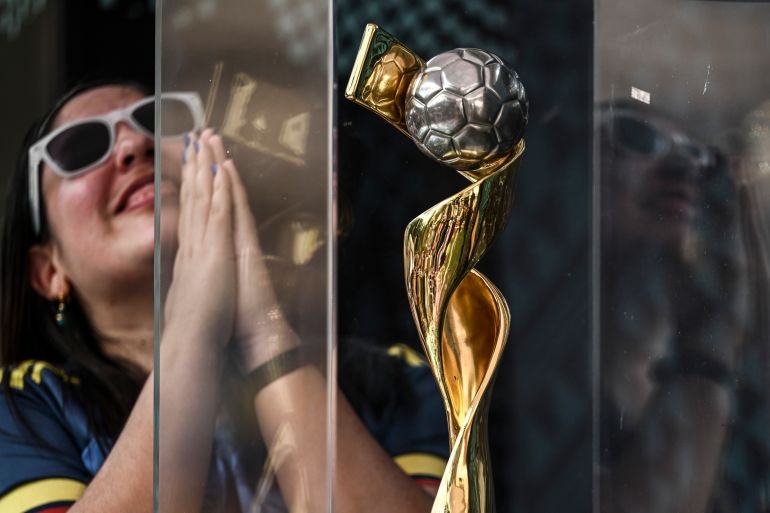With 100 days to Women’s World Cup, calls for gender equity grow
FIFA says the tournament in Australia and New Zealand will be a ‘watershed’ that propels women’s football to another level.

Australia and New Zealand, the co-hosts of the Women’s World Cup, have marked the 100-day countdown to the global football showpiece with a call for gender equity in sport and a rallying cry for fans to get behind the event.
The 32-team tournament, the first Women’s World Cup in the Southern Hemisphere, will kick off in Sydney and Auckland on July 20 when Australia’s Matildas and New Zealand’s Football Ferns play their opening matches.
Keep reading
list of 3 itemsOn Women’s Day, watch these five unsung heroes changing the world
For women football fans, safety is a winner at World Cup 2022
“In just 100 days’ time, we will witness the world’s best football players on our shores, right here in Australia and New Zealand,” Women’s World Cup CEO David Beeche said on Tuesday at a launch at the Sydney Football Stadium.
“The two opening matches, the first at Eden Park in Auckland and the second here in Sydney later that day, mean July 20, 2023, will be one of the biggest days in women’s football history,” he said. “But this women’s tournament is not just about football. It’s about celebrating women’s sports and women’s empowerment all over the world.”
Introducing the #UnityBeat! 🎶
Launching today as the official chant of #FIFAWWC 2023! 😍
100 days to go until we go #BeyondGreatness! 🙌
— FIFA Women's World Cup (@FIFAWWC) April 11, 2023
However, while Australia has boosted funding for elite women’s programmes in recent years, the country is ill-equipped to handle an expected rise in grassroots participation, officials say.
“Currently, only 40 percent of football facilities nationwide are classified as female-friendly,” Football Australia said in a statement.
“It is imperative that we invest in our 2,400+ community clubs across the country to ensure they are adequately prepared for the expected surge in female participation, and participation in the sport more broadly,” it said.
‘Watershed moment’
FIFA has predicted the tournament will be a “watershed moment” that will propel the game to another level with the target to eventually rival the men’s version of the game.
Women’s football is already enjoying a surge in popularity in some countries, and the tournament looks set to spark further global interest.
FIFA’s chief women’s football officer, Sarai Bareman, told NewsCorp Australia that more than 2 billion viewers were expected to tune in to watch the event, double the previous tournament in France, which was won by the United States.
Record attendance is also predicted with 650,000 tickets already snapped up. The next phase of sales opened on Tuesday.
Bareman said she believed the event would be a major turning point and a driver for social change, creating role models for girls and helping promote gender equality.
“People will be saying, ‘That was the watershed moment that changed everything and took the game to the next level,'” she said.
“And that’s in every aspect – commercially, participation, popularity and growth,” she said.
In 100 days we welcome the world to our shores for the biggest #FIFAWWC ever. The tournament will transform the future of women's football in Australia and we can't wait. #Legacy23 #BeyondGreatness pic.twitter.com/jqIZHYcEP9
— Football Australia (@FootballAUS) April 11, 2023
Ultimate goal is equal pay
Bareman, a New Zealand-born former Samoan international, said the ultimate goal was for the tournament to rival the men’s and get women on equal footing in terms of pay.
“We know the men’s World Cup is the primary source of revenue for FIFA and football, and that generates in excess of $5bn per edition, and that’s a clear target for women’s football,” she said.
“We want to get to that level,” Bareman said. “The first World Cup for men was in 1930. It wasn’t until 61 years later the first women’s World Cup was introduced. We’re still in our infancy as a product.
“But we have to look at what’s happening in the men’s game as an inspiration and a target. For me, it’s got to be in the billions, and we have to keep pushing until we get to that level.”
The tournament, which will take place in five Australian and four New Zealand cities, has been expanded from 24 to 32 teams for the first time.
